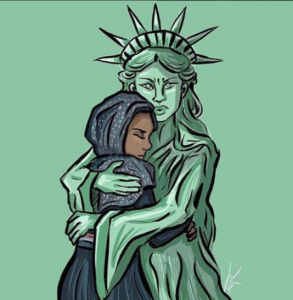
PAGE NAVIGATION
- Introduction
- Key Actors
- Social Media Presence
- Offline Presence
- Impact of the Movement
- Critiques of Movement
- Conclusion
Introduction
#NoBanNoWall was a social media reaction to President Donald Trump’s travel ban on entry into the United States from certain countries. On January 25, 2017, Executive Order 13769, which came into effect from January 27, 2017, to March 16, 2017 [1] was released by the President. Officially titled “Protecting the Nation from Foreign Terrorist Entry into the United States”, news reports and social media quickly began to refer to the executive order as the “Muslim Ban” [2], as individuals from Muslim majority countries were being predominantly affected.
This order barred entry to specific countries in the Middle East and Africa, including Iran, Iraq, Libya, Somalia, Sudan, Syria, and Yemen. Most of these countries are home to Muslim majority populations (populations with over 50% of it’s residing residents being Muslim). Additionally, it restricted the number of refugees to enter the United States from 70,000 to 50,000 [3], suspended the Refugee Admissions Program, and suspended entry to individuals whose country did not meet certain adjudication standards [4]. The entry of Syrian refugees was suspended indefinitely until further notice. In later iterations of the Travel Ban, Chad, North Korea, and Venezuela were added to the list [5].
As individuals were detained at airports, broadcasts of these detentions on news networks struck panic amongst affected communities. The globe watched in horror at the release of such an order and evoked emotional responses from many across social media [6] in the forms of hashtags that engaged citizens to stand in solidarity with those families affected by the ban.
The hashtag “#NoBanNoWall” first was seen on January 24th, 2017 on social media platform Twitter [7], before the news of executive order 13769 was released to the public the next day. This hashtag became a symbol of solidarity for Americans across the nation that disagreed with the ruling of the “Muslim Ban” by the President and Supreme Court. The use of social media platforms such as Twitter, Facebook, and Instagram became a powerful catalyst for an opposition movement that resulted in political mobilization and awareness of the issue at hand.
Citizens in the United States and around the globe, regardless of gender and ethnicity, felt an emotional response to seeing family members being separated from each other at airports [8]. Particularly, international airports in the United States were immediately impacted after the implementation of executive order 13769. These include (but are not limited to): New York, Atlanta, Detroit, Chicago, Boston, and San Francisco airports. The coverage of the airport protests affected the international community as well, with people engaging in acts of solidarity through social media [9].
A defining symbol that was used in association with the #NoBanNoWall movement was the iconic American Statue of Liberty hugging what is illustrated as an immigrant woman [10]. Celebrities such as Fifth Harmony’s Lauren Jauregui shared the picture on their Instagram timelines in solidarity with those being affected by Donald Trump’s policy [11].
Key Terms
Muslim- A Muslim is any follower of Islam [13]. The term “Muslim” is used in the context of this article to refer to the Muslim majority countries that are affected by the travel ban
Travel ban- An executive branch order that forbids the entry of individuals from a specified country to enter the United States (in this case) [14].
Executive Order 13769: Widely referred on social media as the “Muslim Ban”, this was the first iteration of an executive order by President Donald Trump to block citizens from 5/7 Muslim majority countries from entering the U.S [15].
Executive Order 13767: An executive order by President Donald Trump to direct government funding towards a wall to be built along the Mexico-United State border [16]. On social media, the wall is referred to as the “Trump Wall” [17].
Wall– Refers to the southern border wall that President Donald Trump actively campaigned for during his election campaign. The wall is also symbolic of the divide President Donald Trump is keeping between Americans and citizens of the world by enacting bans that directly impact refugees.
SCOTUS– Supreme Court of the United States
Refugee– An individual who has been forced to leave their country because of natural disaster, persecution, or war [18].
DREAMers– Recipients of the Deferred Action on Childhood Arrivals program, an immigration policy specifically for individuals who came to the United States as a minor, without official legal authorization [19].

Political Spectrum
Left/middle: Individuals who identified themselves as socially liberal or moderate supported the #NoBanNoWall movement, meaning they did not support President Trump’s enactment of a travel ban. Those engaged in the movement that considered themselves very liberal believed the United States should not restrict any individuals from coming into the country, regardless of refugee or immigration status.
Right: Those with conservative ideologies agreed with the enactment of President Trump’s travel ban, and furthermore believed that a wall on the Southern border of the United States would help in aiding the illegal immigration epidemic. These right-wing supporters of President Trump’s policy created the opposition movement #BuildTheWall. These individuals believed that a wall would help curb illegal immigration from Mexico into the United States [21].
Timeline
Trump issued an executive order that banned individuals who are not naturalized citizens of their residing country from 7 countries [22]. A NY federal judge accepted a request from the ACLU to protect those stranded in airports [25]. Included grandparents, grandchildren,brothers/sisters in law, nieces, nephews, aunts, uncles of anyone in the US [28]. Dow was a refugee in Washington and is finally reunited with his wife and kids. Supreme Court supports the third version of the Muslim ban [29].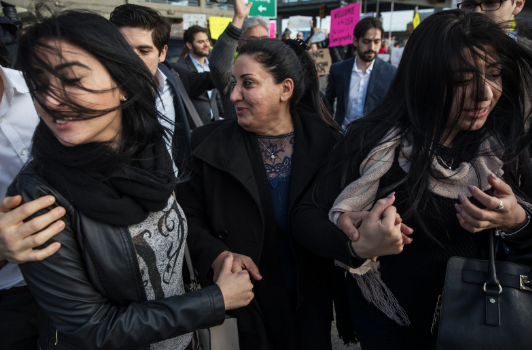
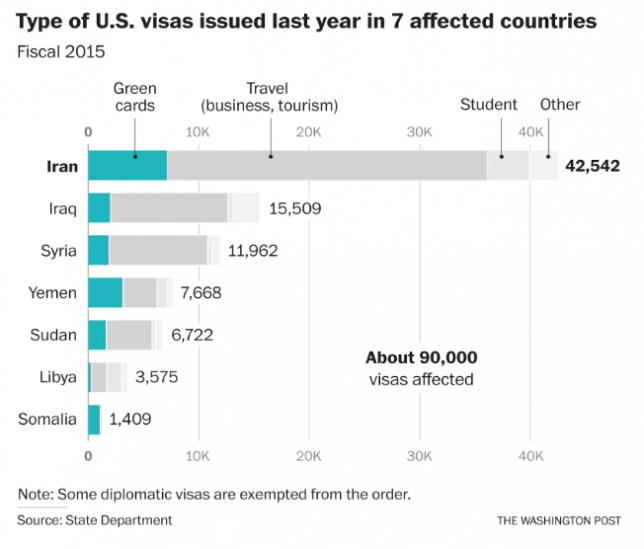
Location/Affiliation
This movement initially started, rapidly, in the JFK airport in New York. Shortly after this first protest, several other protests sparked in airports nationwide. Some cities with the largest protests include but are not limited to Boston, Chicago and San Francisco [32].
The largest protest in the movement occurred in New York; the same place where it all started. In New York, protests spread across many days starting on January 25th, 2017 and ending on January 30th, 2017. The single protest that had the highest number of marchers was on January 27th, 2017 where nearly 30,000 protesters came to chant “No ban no wall.” The other protests in New York had about 2,500 participants on average . This movement was affiliated with the idea of who gets to enter the United States. The movement impacted individuals globally and especially those who were in the seven countries that were part of the ban. Refugees were the second largest group of individuals that were impacted as they were not allowed to enter the US for a long period of time and some indefinitely.
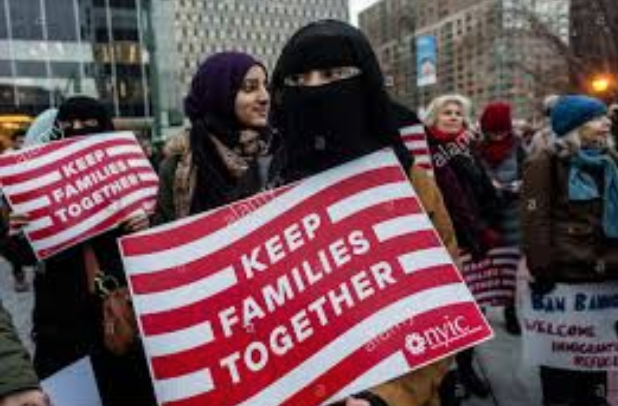
Affected Locations
Iran
The administration said Iran regularly fails to cooperate with officials [35] and are considered “state sponsors of terrorism” by the U.S. State Department [36].
Yemen
Political instability and the presence of terrorist activity around the region have led to Yemen being placed on the travel ban list. The country is also unable to adequately document travelers [37].
Syria
Reportedly, failure to properly report public safety and terrorism-related info put Syria on the Travel Ban list [38].
Libya
Inability to report terrorism/safety-related information and impending refugee crisis, widespread violence, internal instability has lead Libya to being banned [39].
Venezuela
In 2016, a state of economic emergency was declared by current leader Maduro. Sanctions, low currency rates, food scarcity, decreasing oil prices and struggles for power within the government lead to aggressive anti-government protests. In one iteration of the travel ban, Venezuelan government officials and their immediate families were banned, but regular citizens were not [40].
North Korea
Lack of willingness to “cooperate with the United States in any respect” [41], notably in terms of a standoff regarding North Korea’s nuclear program.
Key Actors
One key actor was Zaki Barzinji who worked under the Obama administration as Senior Associate Director of Public Engagement [42] and worked as a liaison to Muslim American communities of faith. He is known to be the first to tweet #NoBanNoWall on twitter [43].
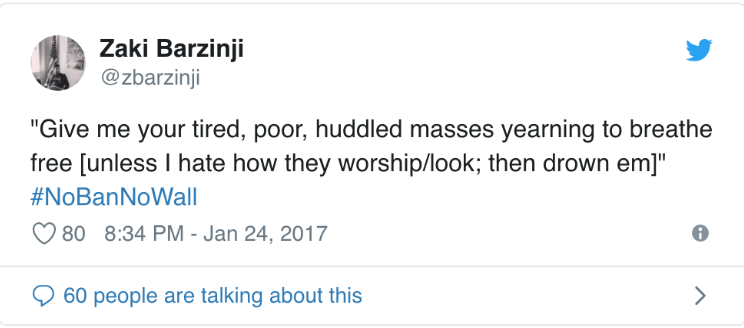
Another key player is Imraan Siddiqi, who tweeted #NoBanNoWall shortly after Barzinji. Siddiqi is the founder of the Hate Hurts campaign, a zero tolerance initiative in the UK that works to combat hate crimes [45], and smartly used his social media presence to help jumpstart the movement.
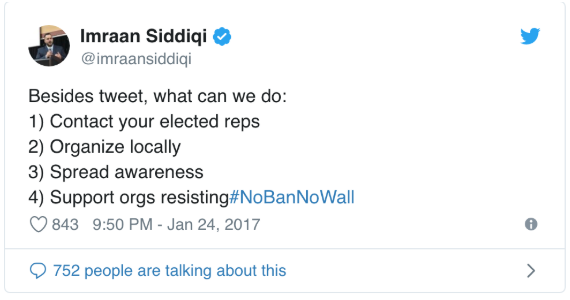
President Donald Trump, without a doubt, was the largest actor in this movement. After creating the executive order that was signed that limited the number of people who entered the country, Trump caused anger amongst those who supported the resettling of refugees into the United States [48].
Opposition
Some of the most prominent opponents to the movement are the five Supreme Court justices who voted to uphold Trump’s executive order [49]. In a 5-4 vote by the Supreme Court, these five men felt the travel ban was justified and legal under the constitution of the United States [50].
Another opponent to the movement was the Build The Wall Incorporation. This incorporation organized by Brian Kolfage states that Trump supporters will continue to donate to the wall if it can keep immigrants from coming into the country. “It is our duty as citizens” the website reads [51].
Senator Thom Tillis states that there are many people to vet out of the country and this ban was one step in getting closer to that goal [52]. He believes that the movement will not affect the opinion and position that a majority of the US population have towards building the wall.
Celebrity Endorsers
Yara Shahidi: Although she was not even old enough to vote, child celebrity Yara used her social media presence to publicly state that “our country’s foundation are immigrants”. Shahidi worked with Michelle Obama in the past and continues to show her support for the movement by sharing anecdotes on her social media and by attending protests. She did not negatively “celebrify” the movement and only raised awareness on the current events on the ban and the impacts that came along with it [53].
Mindy Kaling: Endorsed the movement by tweeting about her immigrant parents and expressing the hard work they put in to be meaningful citizens of the United States. Mindy powerfully supported the movement by also writing in her book about the immigrant struggles and realities [54].
Bruce Springsteen: Springsteen took many measures to show his public endorsement of the movement. He spoke at interviews and leveraged his social media presence by tweeting to his fans that these actions by our president are “fundamentally un-American” [55]. Before performing at one of his concerts, he dedicated a song specifically to those affected by the ban.
Ellen DeGeneres: DeGeneres endorsed the movement from a simple tweet that showcased her love for immigrants [56]. Her large social media presence may have celebrified the movement, by helping those who role model her to believe in immigrants rather than to vet them out the US.
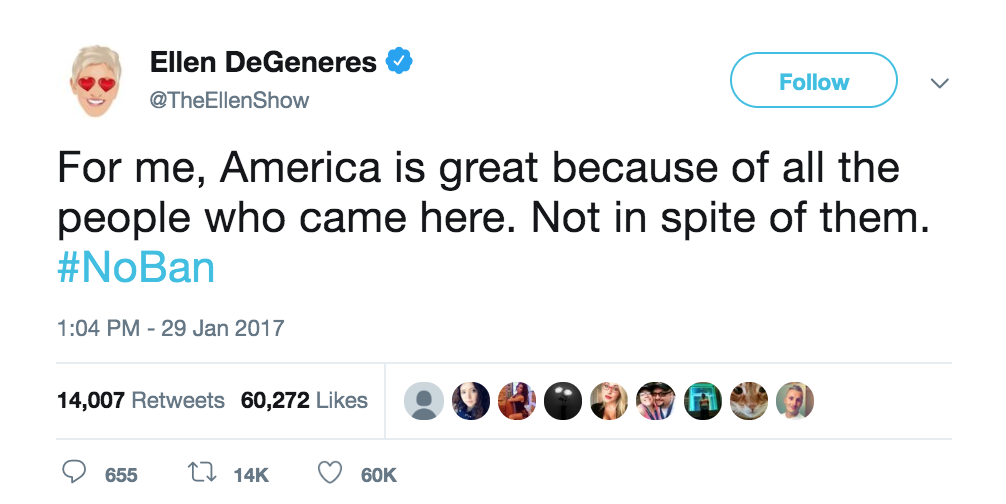
People of color participated the most in the movement. Individuals that came from an immigrant background or identified themselves as Muslim were found to be partaking in social media posts the most. These include but are not limited to individuals whose families immigrated from Pakistan, Iran, Yemen, Syria, Iraq, and Afghanistan [59].
The ACLU and Northwest Immigrant Rights Project also played crucial roles in this movement. Both organizations helped push several court hearings that ultimately helped refugee individuals reunite with their families in the United States. [60]
ACLU was involved in the following cases and requests [61] :
- ACLU-WA Amicus Brief in Washington v. Trump
- ACLU national FOIA request
- Temporary Restraining Order
- Complaint in Does v Trump
- Complaint in International Refugee Assistance Project v. Trump
- ACLU Blog Post: We’ll See You In Court 2.0
- District Court Order in Hawaii v. Trump
- ABC News: Federal Court Blocks President Trump’s New Travel Ban
- 4th Circuit of Appeals Opinion in International Refugee Assistance Project v. Trump
- Supreme Court Issues Mixed Order On Muslim Ban Implementation
Social Media Presence
The improvements in technology and accessibility to the internet have allowed people to communicate their ideas and thoughts to other internet users around the world. The internet and social media networks are used not only to communicate with friends but also to find information, buy and sell products, watch television shows, search for entertainment and participate in political spheres [62]. In 2004 only 18% of teens owned cell phones whereas in 20019 58% of teens own their own smartphones [63]. Almost all of these internet users reported that they use internet networks primarily for communication.
The increasing accessibility of the Internet allows more people to easily communicate with each other around the world, and this became a powerful asset for online communication platforms such as Twitter, Facebook, Tumblr, etc. These social media platforms not only allowed people to communicate with others across the globe but they also created algorithms that allow people to view online posts that match their interests. Twitter especially is known for hashtags, (# symbol followed by text) which produces associations between users and texts that are easy to search within the platform. Through processes of communication along with Twitter’s “trending” algorithm, certain hashtags become more popular than others and are accessible to others around the world [64]. Just like many other movements, #NobanNoWall was created on Twitter to act as a means of “coordinating discussion among large numbers of users who do not need to be connected through existing follower networks” [65]. Just like the feature image has shown, this image was shared many times across various social media platforms, and symbolizes how participants of the movement supported and welcomed immigrants that wanted to take refuge in the United States. [12]
#NoBanNoWall has been seen on multiple social media platforms such as Twitter, Facebook, Tumblr, Instagram, Flickr, and many others. On January 25, 2017, protesters gathered at Washington Square Park in New York and chanted: “No ban, no wall.” [66] These chants were soon used on Twitter as #NoBanNoWall to protest President Trump’s border wall and travel ban policies also known as Executive Order 13767 and 13769. Once the hashtag gained popularity on Twitter, it’s popularity began to rise on other social media platforms. There are multiple Facebook groups and pages on #NoBanNoWall along with events that were created for protests at various locations. Currently, there are 276K posts on Instagram with the #NoBanNoWall tag.
Popular Hashtags
- #NoTrump: This hashtag also became very popular on social media platforms and was used by protesters who criticized Trump’s policies.
- #GrandparentsNotTerrorists: President Trump’s travel ban was planned to suspend the issuance of visas to refugees and citizens of North Korea, Venezuela and 5 Muslim majority countries Libya, Iran, Somalia, Syria, and Yemen. However, it was stated that refugees or citizens of these countries who have a “bona fide relationship” with a person in the US would be exempt from this ban [67]. This meant that grandparents, grandchildren, aunts, and uncles were not exempt from the travel ban. This was protested on Twitter and other social media platforms using the #grandparentsnotterrorist. Social media users used this hashtag and uploaded a photo of their grandparents and protested the travel ban.
- #MuslimBan: This hashtag was used by people who wanted to add to the discussion of the Muslim Ban. In posts related to this hashtag, there are posts from supporters as well as those that oppose President Trump’s policy.
- #BuildTheWall: People used this hashtag on Twitter and other social media platforms to show their support for President Trump’s Border Wall executive order.
- #RefugeeCaravan/#MigrantCaravan: these hashtags were used on social media to protest the travel ban that closed the southern border to Central America.
- #BanTheMuslims: This hashtag was used mainly by alt-right supporters, and often associated with racist and hateful content.
Important Posts
Donald Trump’s tweet on building the Wall: President Trump is a very active Twitter user with 59.6 million followers. This tweet was criticized by many as it generalizes Mexico as dangerous due to the characterization of drug cartels in media.
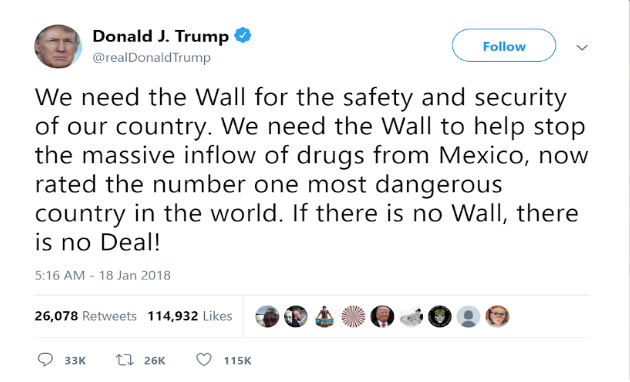
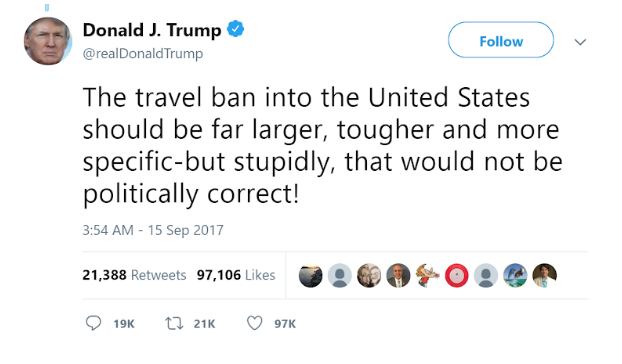
Trump on Controversial Policies: President Trump makes a very strong claim about his thoughts. All of these topics including the Travel ban (Muslims), Border Wall and illegal immigration are very sensitive topics but President Trump makes a very strong claim on all of these controversial topics by supporting his own ideas.
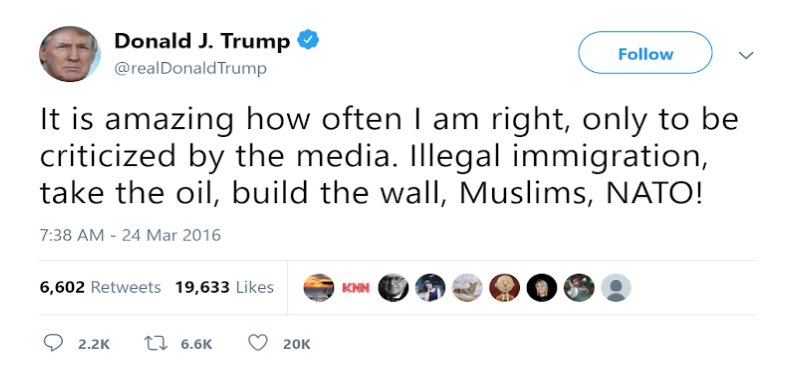
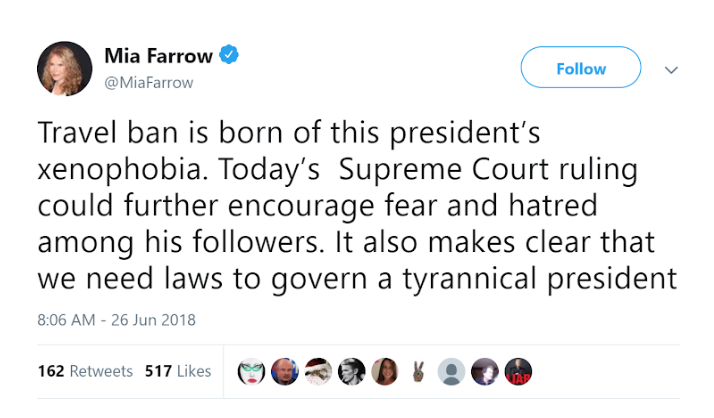
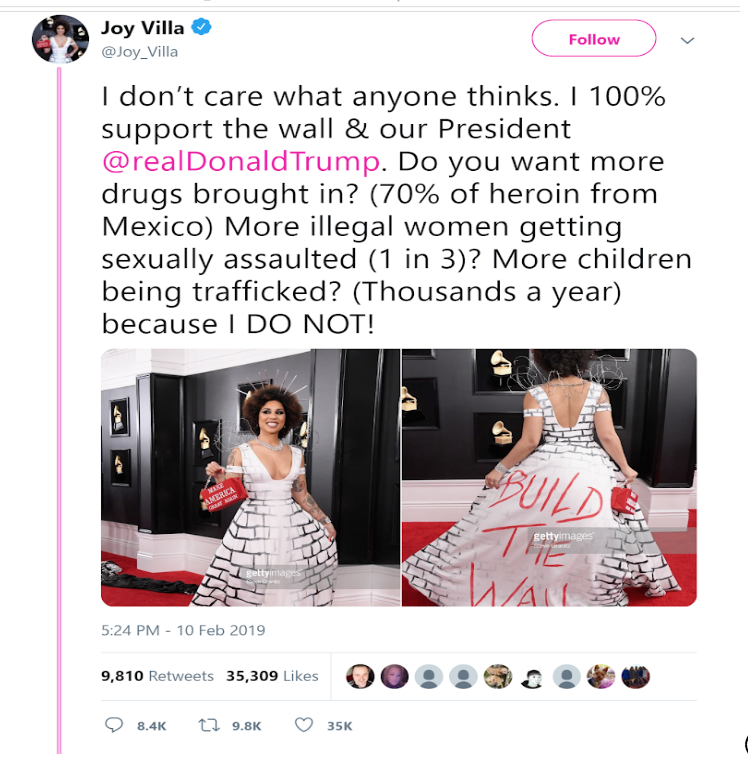
Meme vs. Cause
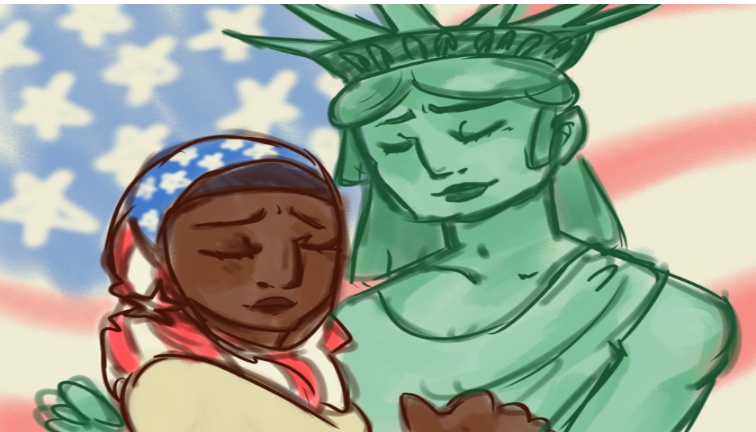
Importance of Social Media
Social media has been very essential for this movement as it allowed the world to become aware of the protests against Donald Trump’s policies. These protests are also very important internationally as the travel ban is about the 7 banned countries. Social media has not only allowed people to share their thoughts about these policies but was also used to schedule protests and events.
Organic growth through occurred through increased popularity on social media. Planned growth through planned protests and events. Many of the protests that emerged in the aiports were caused from organic growth, while the protests that were planned through social media in major cities was caused from planned growth.
Offline Presence
The #nobannowall movement started started by offline protests on January 2017 and spread across online platforms that allowed the movement to become more popular. The chants from the protests held at Washington Park Square became a viral hashtag #nobannowall and spread across Twitter as an extension of the offline events [77]. The online support of the movement was crucial as it allowed participants and supporters to share information and coordinate with the world which was also an attempt to invite more people to the protests. The Twitter hashtag #nobannowall was used for various reasons and it played a crucial role in sharing the offline experiences of the protesters. In other words, the online presence of the movement helped support the offline presence by making the movement easily accessible to the world through tweets, Facebook groups, and Instagram posts.
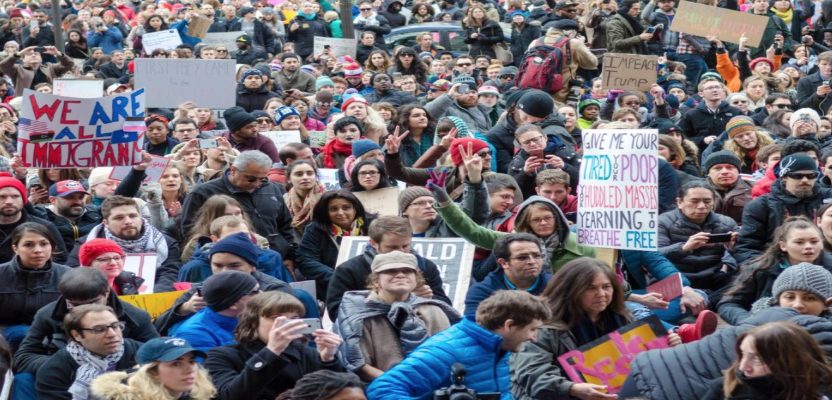
The offline presence of the movement soon became very popular at Airports around the United States and the world including San Francisco, Portland, Detroit, Seattle, London and Germany.
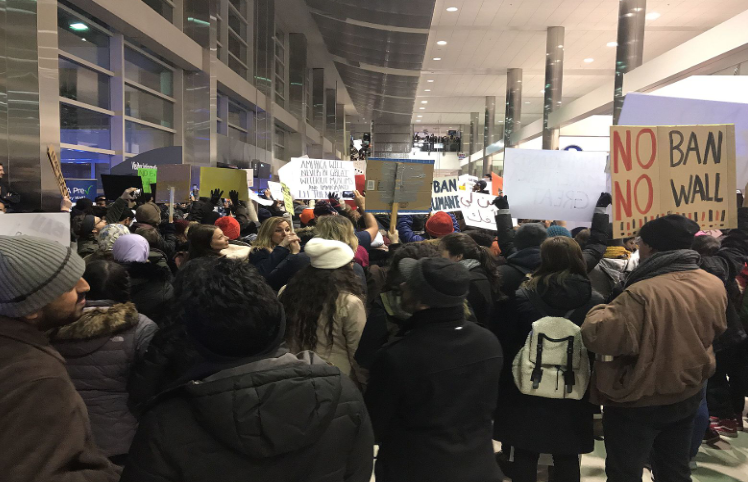
Antecedents
Congress passed a quota system that restricted legal immigration following the halt of the bracero program. Numbers rose from Mexico from 25,000 to 450,000 [80].
Leonard Chapman, the commissioner of Immigration, described the immigration situation at the time as cause for national panic. It set a tone that has influenced anti-immigrant sentiment to present day, “When I became commissioner in 1973, we were out-manned, under-budgeted, and confronted by a growing, silent invasion of illegal aliens. Despite our best efforts, the problem — critical then — now threatens to become a national disaster [81],” CIA Director William Colby made the apparent threat of immigrants into an issue that was racist and violent, “The most obvious threat, is the fact that…there are going to be 120 million Mexicans by the end of the century. . . . [The Border Patrol] will not have enough bullets to stop them [82].” The words of these influential men created movements that spouted xenophobia far before the inception of social media, creating the basis of the anti-immigration sentiment demonstrated today through conservative social media.
Iran
Points of stress in Iranian-American relations most memorably began in the 70s during the revolution and impending hostage crisis. Under the Obama administration, a framework for a nuclear deal had been reached. It garnered massive support from EU countries but was highly disputed among American Conservatives. President Trump has moved to withdraw from the deal. Social media has been a popular outlet for these proceedings for opponents and supporters. #IranDeal trended on Twitter as a parallel and preceding online movement.
Yemen
Political instability and presence of terrorist activity around the region has led to Yemen being placed on the travel ban list, but online movements against Saudi Led Airstrikes in Yemen that are backed by the United States [83] has led to the portrayal of Yemeni citizens as victims, rather than a problem that should be detained. Destruction and instability has led to the hashtag #Yemen and #Refugees to highlight the massive humanitarian crisis that has led to large migration numbers to the U.S. and other western countries.
Syria
#Refugees and #SyrianRefugees [84] has been an outlet for the world to see the conditions that refugees live in across the European countries they’ve been admitted to.
Impact of Movement
The online presence of #NoBanNoWall worked as a catalyst to create change for the individuals impacted in airports immediately after the ban was announced. A New York judge accepted a request from the ACLU to provide a national warrant to block deportation in airports.
In addition, this movement helped increase general awareness of not only the topics of immigration but religion and the refugee crisis.
This movement gave a platform for stories shared by immigrants how coming to the US had positively impacted their lives, and how their cultures and existence shouldn’t be cause for fear. Public education of the countries involved increased as well: a report by found that no national from the countries listed on the travel ban had ever perpetrated a terrorist attack on American soil [85]. Social media coverage of this fact helped inform public opinion regarding the legitimacy of the order.
Critiques of Movement
Because some countries affected by the travel ban are politically unstable and with reported terrorist activity in some of those countries, there is fear that disposing of the travel ban will leave the United States unprotected. Arguments for the Muslim Ban and Wall contend that in creating restrictions for nationals from “dangerous” countries, these restrictions push foreign governments to be more cooperative with the United States, namely identification and vetting issues [86].
Conclusion
Though the #NoBanNoWall movement started in 2017 to protest President Donald Trump’s immigration policies, the movement became one of the first times that citizens felt mobilized to take back the voice and power that President Donald Trump often capitalized off of [87]. The movement and its subsequent social media engagement became a microphone to project the voice of citizens that disagreed with President Trump’s policies. The engagement on social media and 24/7 news coverage took away the power from President Donald Trump, who received much of his popularity from how much he was being talked about on news networks [88]. As more people interacted with movement on social media, local Facebook events were created for protests and this provided a physical space for protestors to link and take a stand for a cause they believed in.
The movement not only raised awareness for immigration rights in the United States, but also internationally as President Trump’s travel ban was protested across the world. For this reason, we believe the #NoBanNoWall movement was successful in mobilizing billions of people across the globe to put international pressure and scrutiny on a policy they did not agree with. This consequently the door for countless social movements that followed and mobilized people in similar ways to #NoBanNoWall. This movement has not ended, as the latest version of the travel ban is still being upheld.
Author Biographies
Kiana Afshar
Kiana is a student at UC Berkeley pursuing computer science and data science. Her interests include product development and human-centered design. Other activities include Iranian Student Cultural Organization.
Simran Kaur
Simran is a UC Berkeley student pursuing a double major in Business Administration and Public Health. Her interests include volunteering for the Sikh Student Association at the UC Berkeley campus.
Can Kaya
Can is a UC Berkeley student pursuing a major in Business Administration at the Haas School of Business. Can competes at the NCAA Division 1 Men’s Tennis Team at Cal. This is his first semester taking classes at the Haas School of Business and wanted to take this class to understand the use of social media in political and social context.
Meghana Krishnakumar
Meghana is UC Berkeley student pursuing a major in Business Administration at the Haas School of Business. With her interest in moving into the tech industry, Meghana chose to take this class to learn more about the intersection of technology and social movements.
Sources
[1]“Executive Order Protecting the Nation from ….” 27 Jan. 2017, https://www.whitehouse.gov/presidential-actions/executive-order-protecting-nation-foreign-terrorist-entry-united-states/. Accessed 23 Apr. 2019.
[2]“Understanding Trump’s Muslim Bans – National Immigration Law Center.” 8 Mar. 2019, https://www.nilc.org/issues/immigration-enforcement/understanding-the-muslim-bans/. Accessed 23 Apr. 2019.
[3]“Understanding Trump’s Muslim Bans – National Immigration Law Center.” 8 Mar. 2019, https://www.nilc.org/issues/immigration-enforcement/understanding-the-muslim-bans/. Accessed 23 Apr. 2019.
[4]“Understanding Trump’s Muslim Bans – National Immigration Law Center.” 8 Mar. 2019, https://www.nilc.org/issues/immigration-enforcement/understanding-the-muslim-bans/. Accessed 23 Apr. 2019.
[5]“The eight countries in Trump’s new travel ban – Washington Post.” 26 Sep. 2017, https://www.washingtonpost.com/graphics/2017/national/permanent-travel-ban/. Accessed 23 Apr. 2019.
[6]“Supreme Court approves Trump’s travel plan and social media reacts.” 26 Jun. 2018, https://www.mercurynews.com/2018/06/26/supreme-court-approves-trumps-travel-plan-and-social-media-reacts/. Accessed 23 Apr. 2019.
[7]https://twitter.com/search?l=&q=%23NoBanNoWall%20since%3A2017-01-23%20until%3A2017-01-27&src=typd
[8]“Protesters across U.S. denounce Trump immigration order – CBS News.” 29 Jan. 2017, https://www.cbsnews.com/news/donald-trump-immigration-order-sows-chaos-at-airports-outrage-at-protests/. Accessed 23 Apr. 2019.
[9]“Foreign critics of Trump’s travel ban face a new foe: The Supreme Court.” 27 Jun. 2018, https://www.washingtonpost.com/news/worldviews/wp/2018/06/27/foreign-critics-of-trumps-travel-ban-face-a-new-foe-the-supreme-court/. Accessed 23 Apr. 2019.
[10]“This Statue of Liberty Drawing Became a Symbol of the “No Ban, No ….” 30 Jan. 2017, https://www.vice.com/en_us/article/8qvzw5/jamie-hu-no-ban-no-wall-jfk-protestors-monday-insta-illustrator. Accessed 23 Apr. 2019.
[11]“This Statue of Liberty Drawing Became a Symbol of the “No Ban, No ….” 30 Jan. 2017, https://www.vice.com/en_us/article/8qvzw5/jamie-hu-no-ban-no-wall-jfk-protestors-monday-insta-illustrator. Accessed 23 Apr. 2019.
[12] https://www.google.com/url?sa=i&source=images&cd=&cad=rja&uact=8&ved=2ahUKEwi1tKvnx_ThAhUBF6wKHbebDHgQjRx6BAgBEAU&url=http%3A%2F%2Fwww.whywhisper.co%2Fthe-blog%2F2017%2F2%2F2%2Fnobannowall-businesses-step-up-to-support-immigrants&psig=AOvVaw3U1AaFpGRHSzMz1m0yrBZd&ust=1556601822073007
[13]“Islam: Basic Beliefs | URI – United Religions ….” https://uri.org/kids/world-religions/muslim-beliefs. Accessed 23 Apr. 2019.
[14]“Trump’s Travel Ban: How It Works and Who Is Affected – The New York ….” 1 Jul. 2018, https://www.nytimes.com/2018/07/01/world/americas/travel-ban-trump-how-it-works.html. Accessed 23 Apr. 2019.
[15]“Executive Order Protecting the Nation from ….” 27 Jan. 2017, https://www.whitehouse.gov/presidential-actions/executive-order-protecting-nation-foreign-terrorist-entry-united-states/. Accessed 23 Apr. 2019
[16]“Executive Order 13767 | Homeland Security.” 25 Jan. 2017, https://www.dhs.gov/publication/executive-order-13767. Accessed 23 Apr. 2019.
[17]“Executive Order 13767 | Homeland Security.” 25 Jan. 2017, https://www.dhs.gov/publication/executive-order-13767. Accessed 23 Apr. 2019.
[18]“What is a Refugee? Definition and Meaning | USA for UNHCR.” https://www.unrefugees.org/refugee-facts/what-is-a-refugee/. Accessed 23 Apr. 20
[19]“DACA – Immigrant Legal Resource Center.” https://www.ilrc.org/daca. Accessed 23 Apr. 2019.
[20]“Trump’s Immigration Ban: Map – The Decolonial Atlas.” 30 Jan. 2017, https://decolonialatlas.wordpress.com/2017/01/30/trumps-immigration-ban-map/. Accessed 23 Apr. 2019.
[21]“Build the Wall.” https://buildthewallpac.com/. Accessed 23 Apr. 2019.
[22]“Trump eyes ending birthright citizenship with executive order – The ….” 30 Oct. 2018, https://www.washingtonpost.com/politics/trump-eyeing-executive-order-to-end-citizenship-for-children-of-noncitizens-born-on-us-soil/2018/10/30/66892050-dc29-11e8-b3f0-62607289efee_story.html. Accessed 23 Apr. 2019.
[23]“Denied Entry – The Washington Post.” http://www.washingtonpost.com/denied-entry/. Accessed 23 Apr. 2019.
[24]“At least 12 detained at JFK under travel ban; two are released.” 28 Jan. 2017, https://nypost.com/2017/01/28/iraqi-citizen-detained-at-jfk-under-refugee-ban-is-released/. Accessed 23 Apr. 2019.
[25]“Federal judge in NY puts halt to deportations ordered by Trump | abc7 ….” 28 Jan. 2017, https://abc7.com/politics/federal-judge-in-ny-puts-halt-to-deportations-ordered-by-trump/1726167/. Accessed 23 Apr. 2019.
[26]“The Muslim Ban: What Just Happened? | American Civil Liberties Union.” 6 Dec. 2017, https://www.aclu.org/blog/immigrants-rights/muslim-ban-what-just-happened. Accessed 23 Apr. 2019.
[27]“Trump travel ban: What does this ruling mean? – BBC News – BBC.com.” 26 Jun. 2018, https://www.bbc.com/news/world-us-canada-39044403. Accessed 23 Apr. 2019.
[28]“Timeline of the Muslim Ban | ACLU of Washington.” https://www.aclu-wa.org/pages/timeline-muslim-ban. Accessed 23 Apr. 2019.
[29]“Trump’s Travel Ban Is Upheld by Supreme Court – The New York Times.” 26 Jun. 2018, https://www.nytimes.com/2018/06/26/us/politics/supreme-court-trump-travel-ban.html. Accessed 23 Apr. 2019.
[30]“Demonstrators in Streets, and at Airports, Protest Immigration Order ….” 29 Jan. 2017, https://www.nytimes.com/2017/01/29/us/protests-airports-donald-trump-immigration-executive-order-muslims.html. Accessed 23 Apr. 2019.
[31]“Who is affected by Trump’s travel ban – Washington Post.” 9 Feb. 2017, https://www.washingtonpost.com/graphics/national/immigration-order-explainer/. Accessed 23 Apr. 2019.
[32]”Protests out of ‘nowhere’: Five lessons from the organizers behind the ….” 17 Feb. 2017, https://maketheroadny.org/protests-out-of-%C2%91nowhere%C2%92-five-lessons-from-the-organizers-behind-the-nobannowall-airport-protests/. Accessed 23 Apr. 2019.
[33]“UrbaNerd: New York City Saw 600 Protests in 2017 | City Limits.” 30 Jan. 2018, https://citylimits.org/2018/01/30/urbanerd-new-york-city-saw-600-protests-in-2017/. Accessed 23 Apr. 2019.
[34]“New York City, USA. February 1st, 2017 No Ban No Wall March for ….” https://www.alamy.com/stock-photo-new-york-city-usa-february-1st-2017-no-ban-no-wall-march-for-muslims-132989559.html. Accessed 23 Apr. 2019.
[35]“Why these 7 countries are listed on Trump’s travel ban — POLITICO.” 26 Jun. 2018, https://www.politico.com/interactives/2018/trump-travel-ban-supreme-court-decision-countries-map/. Accessed 23 Apr. 2019.
[36]“The eight countries in Trump’s new travel ban – Washington Post.” 26 Sep. 2017, https://www.washingtonpost.com/graphics/2017/national/permanent-travel-ban/. Accessed 23 Apr. 2019.
[37]“Why these 7 countries are listed on Trump’s travel ban — POLITICO.” 26 Jun. 2018, https://www.politico.com/interactives/2018/trump-travel-ban-supreme-court-decision-countries-map/. Accessed 23 Apr. 2019.
[38]“Why these 7 countries are listed on Trump’s travel ban — POLITICO.” 26 Jun. 2018, https://www.politico.com/interactives/2018/trump-travel-ban-supreme-court-decision-countries-map/. Accessed 23 Apr. 2019.
[39]“Why these 7 countries are listed on Trump’s travel ban — POLITICO.” 26 Jun. 2018, https://www.politico.com/interactives/2018/trump-travel-ban-supreme-court-decision-countries-map/. Accessed 23 Apr. 2019.
[40]“Why Is Venezuela On Trump’s Travel Ban? | Fortune.” 25 Sep. 2017, http://fortune.com/2017/09/25/donald-trump-travel-ban-venezuela/. Accessed 23 Apr. 2019.
[41]“Why these 7 countries are listed on Trump’s travel ban — POLITICO.” 26 Jun. 2018, https://www.politico.com/interactives/2018/trump-travel-ban-supreme-court-decision-countries-map/. Accessed 23 Apr. 2019.
[42]“Zaki Barzinji | whitehouse.gov.” https://obamawhitehouse.archives.gov/blog/author/zaki-barzinji-0. Accessed 23 Apr. 2019.
[43]“Zaki Barzinji on Twitter: “More than just a #, #NoBanNoWall is a ….” https://twitter.com/zbarzinji/status/824633456445554690. Accessed 23 Apr. 2019.
[44]“#NoBanNoWall is a heartbreaking rallying cry against Donald Trump’s ….” 24 Jan. 2017, https://mic.com/articles/166577/nobannowall-is-a-heartbreaking-rallying-cry-against-donald-trumps-muslim-ban-and-border-wall. Accessed 23 Apr. 2019.
[45]“NoBanNoWall – A Plus.” 26 Jan. 2017, https://aplus.com/a/border-wall-travel-bann-no-ban-no-wall. Accessed 23 Apr. 2019.
[46]https://twitter.com/imraansiddiqi/status/824117130601709568?ref_src=twsrc%5Etfw%7Ctwcamp%5Etweetembed%7Ctwterm%5E824117130601709568&ref_url=https%3A%2F%2Fmic.com%2Farticles%2F166577%2Fnobannowall-is-a-heartbreaking-rallying-cry-against-donald-trumps-muslim-ban-and-border-wall
[47]“Murad Awawdeh on Twitter: “TAKE ACTION: #NYC head to #JFK #T4 ….” https://twitter.com/heyitsmurad/status/825372272118611969?lang=en. Accessed 23 Apr. 2019
[48]“Trump’s US travel ban: What’s the full story? – CBBC Newsround.” https://www.bbc.co.uk/newsround/38794001. Accessed 23 Apr. 2019.
[49]“17-965 Trump v. Hawaii (06/26/2018) – Supreme Court.” 26 Jun. 2018, https://www.supremecourt.gov/opinions/17pdf/17-965_h315.pdf. Accessed 23 Apr. 2019.
[50]The Justices Vote 5-4 to Uphold Donald Trump’s Travel Ban – Presidential Power. https://www.economist.com/democracy-in-america/2018/06/26/the-justices-vote-5-4-to-uphold-donald-trumps-travel-ban. Accessed 19 May 2019.
[51]“Home – Support We Build the Wall, Inc. organized by Brian Kolfage.” https://webuildthewall.us/. Accessed 23 Apr. 2019.
[52]“Republicans In Congress Celebrate Travel Ban Ruling | Time.” 26 Jun. 2018, http://time.com/5322856/trump-travel-ban-republicans/. Accessed 23 Apr. 2019.
[53]“NBCBLK28: Finding Her Voice: ‘Black-ish’ Star Yara Shahidi Wants to ….” 1 Feb. 2017, https://www.nbcnews.com/feature/nbcblk28-2017/nbcblk28-finding-her-voice-black-ish-star-yara-shahidi-wants-n713676. Accessed 23 Apr. 2019.
[54]“Trump Immigration Ban: Celebrity Reactions | Time.” 31 Jan. 2017, http://time.com/4653873/donald-trump-immigration-ban/. Accessed 23 Apr. 2019.
[55]“‘Fundamentally un-American’: Bruce Springsteen slams Trump ….” 30 Jan. 2017, https://www.usatoday.com/story/life/music/2017/01/30/bruce-springsteen-slams-president-trump-immigration-ban/97236886/. Accessed 23 Apr. 2019.
[56]“Ellen DeGeneres on Twitter: “For me, America is great because of all ….” https://twitter.com/theellenshow/status/825811984021024768?lang=en. Accessed 23 Apr. 2019.
[57]“Ellen DeGeneres on Twitter: “For me, America is great because of all ….” https://twitter.com/theellenshow/status/825811984021024768?lang=en. Accessed 23 Apr. 2019
[58]“Federal judge blocks Trump’s third travel ban – The Washington Post.” 17 Oct. 2017, https://www.washingtonpost.com/world/national-security/federal-judge-blocks-trumps-third-travel-ban/2017/10/17/e73293fc-ae90-11e7-9e58-e6288544af98_story.html. Accessed 23 Apr. 2019.
[59]“#NoBanNoWall – Amnesty International USA.” https://www.amnestyusa.org/nobannowall/. Accessed 23 Apr. 2019.
[60]“Timeline of the Muslim Ban | ACLU of Washington.” https://www.aclu-wa.org/pages/timeline-muslim-ban. Accessed 23 Apr. 2019.
[61]“Timeline of the Muslim Ban | ACLU of Washington.” https://www.aclu-wa.org/pages/timeline-muslim-ban. Accessed 23 Apr. 2019.
[62]Bruns, A., & Burgess, G. (2015). Twitter hashtags from ad hoc to calculated publics. In N. Rambukkana (Ed.), Hashtag publics: The power and politics of discursive networks (pp. 13-27). New York, NY: Peter Lang
[63]Who interacts on the Web?: The intersection of users’ personality and ….” https://www.sciencedirect.com/science/article/pii/S0747563209001472. Accessed 11 Apr. 2019.
[64]Jones, S., & Fox, S. (2009). Generations Online in 2009. Pew ….” http://www.scirp.org/(S(i43dyn45teexjx455qlt3d2q))/reference/ReferencesPapers.aspx?ReferenceID=1250364. Accessed 11 Apr. 2019.
[65]“Lenhart, A., Purcell, K., Smith, A., Zickuhr, K. – Social Capital Gateway.” http://www.socialcapitalgateway.org/content/paper/lenhart-purcell-k-smith-zickuhr-k-2010-social-media-and-young-adults-pew-internet-amer. Accessed 11 Apr. 2019.
[66]“Conflict imagery in a connective environment: audiovisual content on ….” 25 Aug. 2017, http://journals.sagepub.com/doi/10.1177/0163443717725574. Accessed 11 Apr. 2019.
[67]“Even Before Trump Acts on Immigration, New Yorkers Protest – The ….” 26 Jan. 2017, https://www.nytimes.com/2017/01/26/nyregion/new-york-protest-trump-immigration-orders.html. Accessed 11 Apr. 2019.
[68]“Trump travel ban: Who counts as a ‘bona fide’ relative? – BBC News.” 14 Jul. 2017, https://www.bbc.com/news/world-us-canada-40455303. Accessed 11 Apr. 2019.
[69]“Donald J. Trump on Twitter: “We need the Wall for the safety and ….” 18 Jan. 2018, https://twitter.com/realdonaldtrump/status/953979393180950528. Accessed 11 Apr. 2019.
[70]“Donald J. Trump on Twitter: “The travel ban into the United States ….” https://twitter.com/realdonaldtrump/status/908645126146265090. Accessed 11 Apr. 2019.
[71]“Donald J. Trump on Twitter: “It is amazing how often I am right, only to ….” 24 Mar. 2016, https://twitter.com/realdonaldtrump/status/713012045214531584. Accessed 11 Apr. 2019.
[72]“Supreme Court’s Travel Ban Ruling: Celebrities React | Billboard.” 26 Jun. 2018, https://www.billboard.com/articles/news/politics/8462933/supreme-court-travel-ban-ruling-celebrity-reaction. Accessed 11 Apr. 2019.
[73]“Joy Villa Wears ‘Build the Wall’ Dress at Grammys; Twitter Asks, ‘Who?’.” 11 Feb. 2019, https://www.ebony.com/entertainment/joy-villa-wears-build-the-wall-dress-at-grammys-twitter-asks-who/. Accessed 11 Apr. 2019.
[74]“”this user does not support the muslim ban” by … – Know Your Meme.” 31 Jan. 2017, https://knowyourmeme.com/photos/1217391-donald-trumps-muslim-ban. Accessed 12 Apr. 2019.
[75]“Madeleine Albright: Trump’s travel ban is ‘anti-American’ – CNNPolitics.” 31 Jan. 2017, https://www.cnn.com/2017/01/31/politics/madeleine-albright-trump-travel-ban-anti-american-cnntv/index.html. Accessed 12 Apr. 2019.
[76]“The Statue of Liberty was built to welcome immigrants – The Guardian.” 4 Jul. 2016, https://www.theguardian.com/books/2016/jul/04/the-statue-of-liberty-immigrants-independence-day. Accessed 12 Apr. 2019.
[77]“NoBanNoWall: The Executive Order Protests, Connective … – UIC Indigo.” https://www.indigo.uic.edu/bitstream/handle/10027/23294/VANDEWIELE-THESIS-2018.pdf?sequence=1&isAllowed=y. Accessed 12 Apr. 2019.
[78]“NoBanNoWall: A Week of DC Protests Against Trump’s … – Rewire.News.” 3 Feb. 2017, https://rewire.news/photos/2017/02/03/nobannowall-week-d-c-protests-trumps-immigration-ban/. Accessed 12 Apr. 2019.
[79]“File:January 2017 DTW emergency protest against Muslim ban – 22.jpg.” 29 Jan. 2017, https://commons.wikimedia.org/wiki/File:January_2017_DTW_emergency_protest_against_Muslim_ban_-_22.jpg. Accessed 12 Apr. 2019.
[80]“Unintended Consequences of US ….” https://www.ncbi.nlm.nih.gov/pmc/articles/PMC3407978/. Accessed 23 Apr. 2019.
[81]Chapman, L. F. (1976) “Illegal Aliens: Time to Call a Halt!” Reader’s Digest (October): 188-92
[82]Gutierrez, Alfredo. To Sin against Hope: How America Has Failed Its Immigrants: a Personal History. Verso, 2015.
[83]“Yemen airstrike kills 22 children fleeing earlier bombing … – CNN.com.” 3 Mar. 2019,
[84]https://twitter.com/search?q=syrian%20refugees&src=tyah&lang=en
[85]“Where America’s Terrorists Actually Come From – The Atlantic.” 30 Jan. 2017, https://www.theatlantic.com/international/archive/2017/01/trump-immigration-ban-terrorism/514361/. Accessed 23 Apr. 2019.
[86]“Supreme Court appears split on Trump’s travel ban – POLITICO.” 25 Apr. 2018, https://www.politico.com/story/2018/04/25/trump-travel-ban-supreme-court-549224. Accessed 23 Apr. 2019
[87]“The Alt-Majority: How Social Networks Empowered Mass Protests ….” 30 Jan. 2017, https://www.nytimes.com/2017/01/30/technology/donald-trump-social-networks-protests.html. Accessed 23 Apr. 2019.
[88]“Trump, social media and the first Twitter-based … – Diggit Magazine.” https://www.diggitmagazine.com/articles/Trump-Twitter-Based-Presidency. Accessed 23 Apr. 2019.
